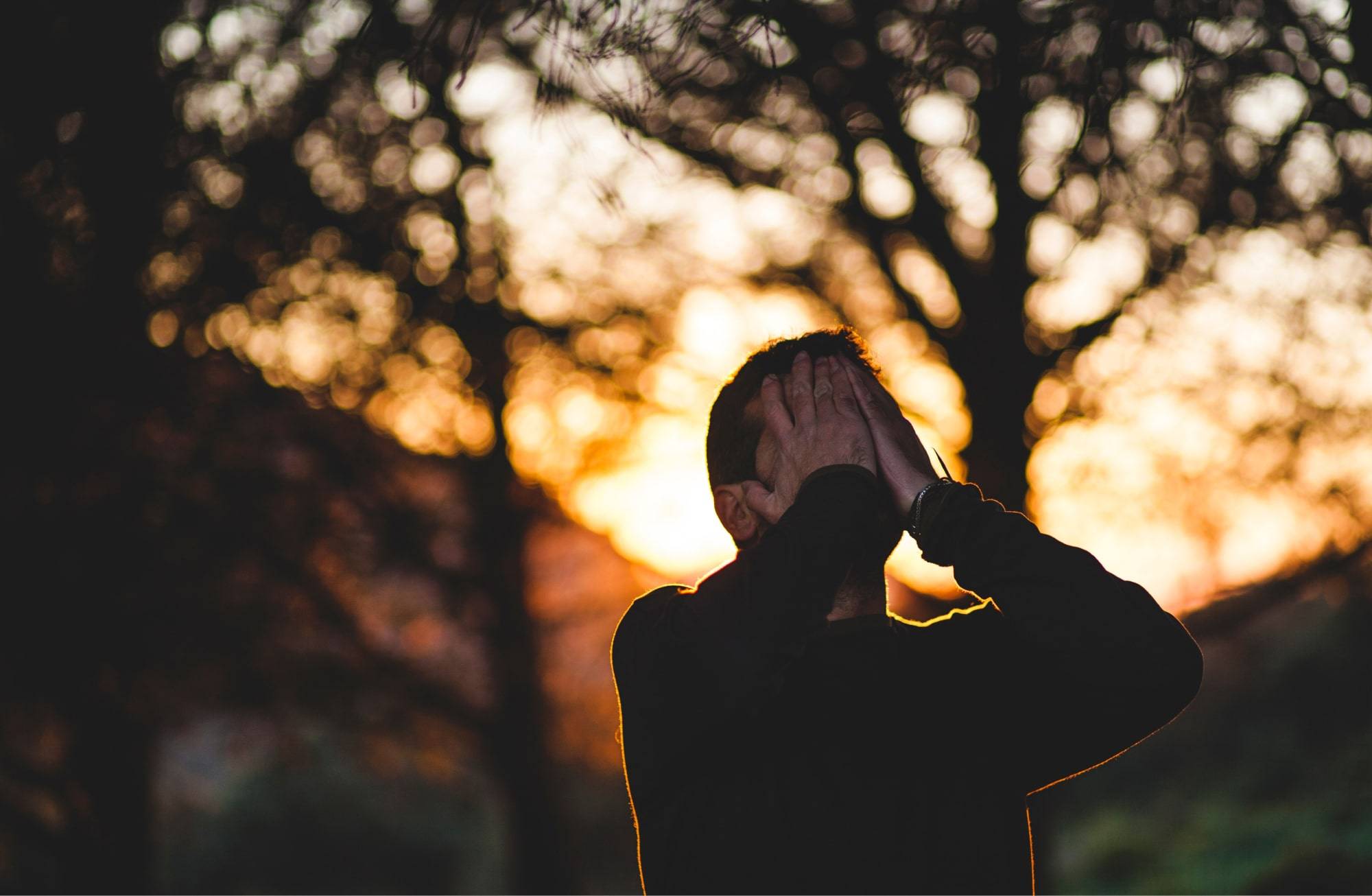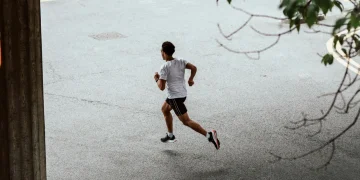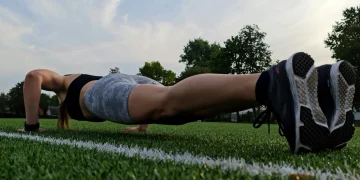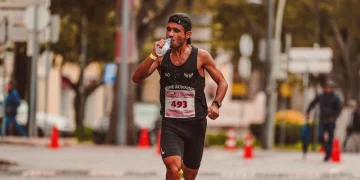Sometimes, runners can experience pain in their head that appears suddenly and does not disappear for several hours. This raises many questions. Why do I get a headache after running? Is it worth continuing to exercise despite the discomfort? Should I pay urgent attention to the signals and stop? Find the answers to these questions and more in this article.
Why does My Head Hurt after Running?
There are more than 150 varieties of headaches. They can be divided into two groups:
- The presence of pathologies in the body
- Non-threatening but requiring adjustments to the exercise regimen
Let’s have a closer look at the possible causes:
Incorrect Breathing Technique while Running
The human respiratory apparatus is directly related to the circulatory and vascular systems. The body takes oxygen from the air and transports it to every cell of the body.
Irregular breathing while running doesn’t saturate the body with oxygen properly. When a person receives an insufficient or excessive amount of oxygen, it can lead to dizziness, shortness of breath, and pain.
Temporary Hypoxia
Running activates changes in the vascular, hematopoietic, and respiratory systems. With an increase in oxygen in the blood, a decrease in carbon dioxide occurs. A decrease in carbon dioxide leads to a sharp narrowing of the blood vessels in the brain. Hypoxia occurs – one of the causes of headaches while running.
Overexertion of the Muscles of the Neck and Head
During training, it is not just the leg muscles that experience the load. Muscles in the back, neck, chest, and arms are also involved. If you feel fatigue in the body after running, including pain in the back of the head and sluggishness of the neck, then the muscles are overstrained. Several factors cause this condition:
- the excessive intensity of physical activity. The problem is relevant for novice runners when the desire for a quick effect is associated with excessive zeal;
- incorrect running technique, when some muscle group experiences more load compared to others;
- osteochondrosis.
The feeling of “stiffness” in the neck indicates an increase in muscle pressure on the vessels due to increased blood flow while running. As a result, the supply of oxygen to the brain becomes difficult.
High Blood Pressure
Physical activity always raises blood pressure. Healthy blood vessels are characterized by a rapid recovery of blood pressure levels after rest. If even a light jog causes acute pain in the back of the head, the blood channels are not functioning properly. The pain in the eyes and nausea accompanying the headache are symptoms of hypertension. Light physical activity in the first stage of hypertension benefits the body, but running is contraindicated in the second and third stages.
Frontis and sinusitis affect the frontal and nasal sinuses, causing the appearance of purulent fluid, nasal congestion, and sharp pain in the forehead and eyes. Often accompanied by ear congestion and dizziness, these symptoms are aggravated by any physical activity, especially when bending over, turning the neck, or running. If even a low-intensity workout causes throbbing pain in the forehead, difficulty breathing, watery eyes, nasal congestion, or fever, this is a reason to see a doctor.
Osteochondrosis
A dull headache in the temples and the back of the head accompanied by neck stiffness most often indicates the presence of osteochondrosis.
Cephalgia may be accompanied by dizziness, slight darkening in the eyes, and an unpleasant crunch in the neck. The cause of pain is structural changes in the vertebral discs of the cervical region, which pinch blood vessels and nerves.
Running increases the brain’s need for oxygen and nutrients, causing the heart to work harder to pump blood. However, compressed arteries and veins disrupt the process of nourishing the brain. Osteochondrosis can cause increased intracranial pressure, which is a dangerous condition.
Increased Intracranial Pressure
The pressure of the cerebrospinal fluid around the brain inside the skull can change for various reasons, even in healthy people. Incorrect posture, the curvature of vertebral cartilage, or pinching can disrupt the circulation of blood and cerebrospinal fluid. Running, like many other sports associated with high loads, jumping, and bending, provokes sharp pressure drops and increases the flow of fluid to the brain. This is contraindicated in people with increased ICP, as it can cause the rupture and hemorrhage of blood vessels. If running causes bursting headaches in the forehead and painkillers don’t help, training should be stopped immediately, especially if the pain in the head is accompanied by clouding of consciousness, impaired vision and hearing, and ringing in the ears.
Injuries
Head and neck injuries can cause severe headaches and pain in the neck during and after running. Regardless of the severity of the injury, physical activity must be stopped. If cephalalgia occurs in the back of the head, it could be a sign of a change in the geometry of the vessels. In the presence of atherosclerotic plaques, shaking caused by running can lead to a blood clot breaking off and blockage of the veins.
Decreased Blood sugar and Electrolyte Imbalances
Potassium, calcium, magnesium, and sodium are the main electrolytes in the human body. An imbalance or a decrease in glucose in the blood can cause a headache.
When should you see a doctor?
- Noise or ringing in the ears;
- Severe dizziness;
- Sharp darkening in the eyes;
- Clouding of consciousness;
- Nausea and vomiting;
- Nose bleeds;
- Numbness of limbs.
The presence of one or more of these symptoms requires immediate medical attention or hospitalization.
How to get rid of a headache after running
When medical intervention is not required, an attack of cephalalgia can be stopped on its own:
- Provide fresh air. If the training is not held on the street, it is necessary to ventilate the room or take a walk. Stuffiness and fatigue after training provoke hypoxia and cephalalgia.
- Massage. If the headache is caused by osteochondrosis, special exercises and regular acupressure of the neck and chest muscles will help cope with spasms and relieve pain.
- Relaxation. A headache, especially caused by emotional or physical overstrain, will recede if the body is allowed to relax and rest. Try lying down with your eyes closed in a darkened, cool room.
- Compresses. Hot compresses on the face will help relieve pain in atherosclerosis, vegetative dystonia, or angina pectoris. But with high blood pressure, the painful condition is relieved by cold compresses (ice wrapped in gauze or a cloth moistened with cold water).
- Take a bath. This is another way to relax after a run. The temperature of the water should be warm, and it is recommended to add aromatic oils or herbs to enhance the effect.
- Medications. If there are no contraindications, it is allowed to take analgesics.
Prevention of headaches after physical exertion
Pay attention to these dos and don’ts to minimize the risk of pain in the temples and the back of the head.
What not to do:
- Running in hot weather.
- Smoke before the run.
- Run after a large meal or on an empty stomach.
- Exercise while intoxicated or hungover.
- Do sports after a long stay in the cold.
- Run in a state of excessive emotional or physical fatigue.
- Drink tea or coffee before or after running.
- Take very deep breaths or grab air superficially.
- Run with increased intracranial pressure or hypertension of the second and third degree.
What to do:
- Warm-up. This will help prepare the muscles and stimulate the cardiovascular system.
- Drink lots of water.
- Breathe properly: rhythm, frequency, depth.
- Breathe rhythmically. Inhale and exhale evenly.
- Run in the park, away from highways.
- If training takes place in the gym, monitor the ventilation of the room.
- Check your heart rate and blood pressure before and after your run.
- Review the mode and intensity of running.
Remember running should not cause discomfort. Episodic cephalalgia during or after running indicates overexertion and fatigue, especially if a person has not been involved in sports for a long time. But a headache in the temples and the back of the head, regular or accompanied by dangerous symptoms, is not considered a normal condition, even in the case of intense training.






